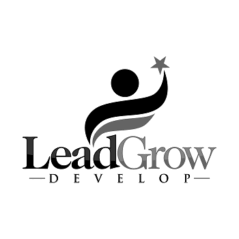In a competitive marketplace, businesses must seek every possible advantage to control costs without sacrificing quality. One of the most overlooked areas for cost savings is packaging. By optimizing packaging strategies, companies can reduce shipping expenses, minimize storage requirements, and improve overall efficiency. The key lies in adopting space-saving innovations that streamline logistics while maintaining product protection and customer satisfaction.
The Hidden Costs of Inefficient Packaging
Many businesses unknowingly spend more than necessary on shipping due to excess packaging. Oversized boxes lead to wasted space, higher dimensional weight (DIM) charges from carriers, and increased material costs. Bulky or poorly designed packaging also takes up valuable warehouse space, leading to higher storage expenses. By reevaluating packaging choices, companies can identify opportunities to reduce these costs significantly.
Multi-Depth Boxes: A Versatile Solution
One of the most effective ways to optimize packaging is by using multi-depth boxes. These boxes feature pre-scored fold lines, allowing businesses to adjust box height based on product size. This eliminates the need for multiple box sizes and reduces excess space within each package. The benefits of these boxes include:
- Lower shipping costs due to reduced dimensional weight pricing
- Minimized need for filler materials, saving on packing supplies
- Improved warehouse efficiency by reducing the number of box types required
Right-Sizing Packaging for Maximum Efficiency
Right-sizing packaging involves selecting the smallest possible container that still provides adequate protection. This approach prevents wasted space and reduces shipping fees. Businesses can achieve right-sizing by:
- Conducting an audit of current packaging dimensions versus product sizes
- Investing in automated box-sizing equipment that customizes packaging for each shipment
- Using inserts, dividers, and protective coatings instead of excessive void fill
Lightweight and Sustainable Materials
Switching to lightweight packaging materials can further reduce logistics expenses. Many modern materials offer strong protection while being lighter than traditional corrugated cardboard or rigid plastics. Lightweight materials also contribute to sustainability efforts, aligning with consumer demand for eco-friendly practices. Options include:
- Recyclable padded mailers for small, durable items
- Molded pulp packaging, which provides cushioning without excess bulk
- Honeycomb cardboard, a lightweight alternative to conventional corrugated boxes
Collapsible and Nesting Packaging
For businesses dealing with bulk shipments, collapsible and nesting packaging can significantly reduce storage costs. These solutions maximize warehouse space and lower return shipping costs for reusable packaging. Some effective options include:
- Foldable plastic crates for products that require sturdy yet space-saving containers
- Stackable trays that optimize space when stored or transported
- Collapsible boxes that can be flattened when not in use
Smart Packaging Technology
Emerging technologies are making it easier to optimize packaging without compromising product safety. Innovations include:
- Automated packaging systems that create custom-fit packaging for each item
- Pressure-sensitive adhesives that eliminate the need for excessive tape or staples
- RFID-enabled smart labels that improve tracking and inventory management, reducing losses and delays
The Impact on Supply Chain and Profit Margins
By adopting space-saving packaging innovations, businesses can achieve significant cost reductions throughout the supply chain. Benefits include:
- Lower freight costs: Smaller, lighter shipments cost less to transport
- Reduced storage expenses: Efficient packaging minimizes warehouse space requirements
- Improved handling efficiency: Lighter, right-sized packages streamline distribution and reduce labor costs
- Enhanced customer experience: Compact, frustration-free packaging leads to better customer satisfaction and fewer returns
Strategic Packaging: Maximizing Efficiency Without Sacrificing Profitability
Businesses that shrink their packaging can also shrink their expenses. By implementing strategies like multi-depth boxes, right-sized packaging, lightweight materials, and collapsible designs, companies can optimize their logistics operations while maintaining high product quality. Investing in these innovations not only reduces costs but also enhances sustainability and operational efficiency, giving businesses a competitive edge. Reducing packaging waste and maximizing efficiency isn’t just good for the bottom line — it’s good for the environment and the future of smart logistics.
Author bio: Jeff Brandt is a Certified Public Accountant (CPA) who oversees operations and accounting functions for Brandt Box & Paper Co., Inc., a trusted packaging company founded in 1952. Brandt has a Bachelor of Accountancy degree from The George Washington University and a Master of Science in Accounting from Indiana University. Representing the third generation of the Brandt family at Brandt Box, Brandt ensures that customers receive cost-efficient packaging solutions.

